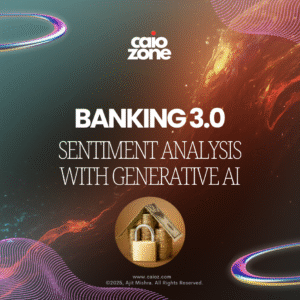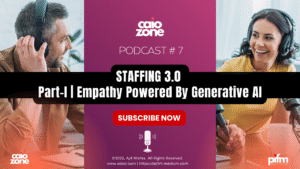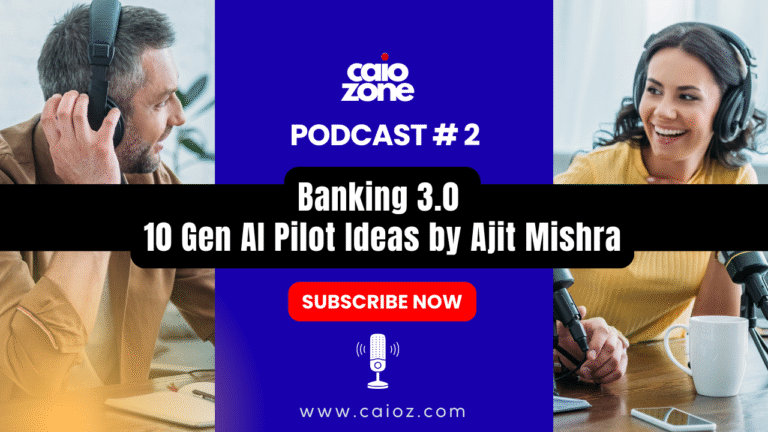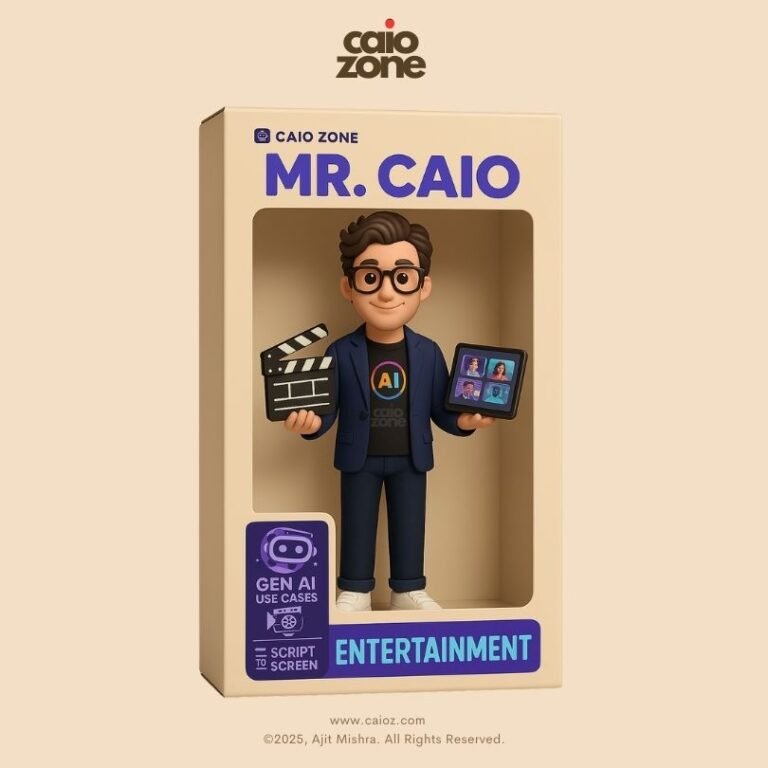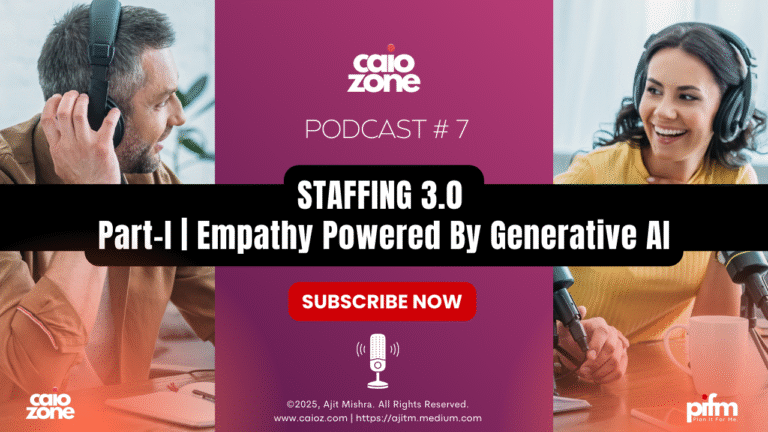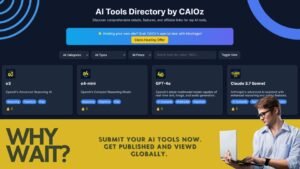SaaS 4.0, or Service-as-a-Software, ushers in a revolutionary shift where software no longer waits for human interaction or cumbersome API calls. Instead, autonomous Agentic AI systems perceive goals, plan workflows, and execute tasks across digital ecosystems — seamlessly and intelligently. This transition eliminates the friction of traditional integrations, SDK dependencies, and manual workflows. For Chief AI Officers (CAIOs) and digital leaders, SaaS 4.0 is not just a technological milestone but a strategic leap that redefines how value is created, delivered, and scaled in the enterprise. In this guide, we’ll explore why Agentic AI is the heartbeat of SaaS 4.0, the architectural foundations required, real-world use cases, and how enterprises can prepare for this inevitable future.
Table of Contents
Beyond the Cloud — Toward Intelligent Execution
In 2005, SaaS revolutionized access. In 2020, it democratized scale. But now, in the dawn of 2025, we’re standing at the threshold of its next and final evolution: SaaS 4.0 — Service as a Software.
As the originator of this concept, I define SaaS 4.0 as not merely software delivered via the cloud, but service executed autonomously by AI agents. This is the end of click-based interfaces, drag-and-drop integrations, and endless SDK/API plumbing.
At the heart of this transformation is Agentic AI — a new class of intelligent systems capable of perception, decision-making, and autonomous action, across fragmented software ecosystems.

Section 1: What is SaaS 4.0 — And Why It’s a Paradigm Shift, Not a Version Upgrade
Before a CAIO can formulate a strategy, they must understand that SaaS 4.0 is not a trend—it’s a systemic reset of what “software” fundamentally means. This section lays the conceptual foundation.
From Software as a Service → to Service as a Software
Traditional SaaS was built for access — enabling users to “use” software without local installs. However, the user was always in the loop. SaaS 4.0 removes the user from the loop.
It’s no longer about accessing software. It’s about executing outcomes.
Agentic AI transforms software from a static tool into a living service organism — capable of:
- Reading goals and constraints
- Making real-time decisions
- Taking multi-step actions across applications
- Reporting outcomes to humans as supervisors, not operators
In SaaS 4.0, the software no longer waits for clicks. It acts.
Section 2: Agentic AI — The Operating System of SaaS 4.0
Just like the internet needed TCP/IP, SaaS 4.0 needs an underlying agentic operating model. A CAIO must evaluate agent frameworks, design principles, safety guardrails, and orchestration flows.
Understanding Agentic AI
Agentic AI refers to systems with these core capabilities:
- Goal-Oriented Autonomy: Operates with defined objectives
- Perception: Understands context across applications and data sources
- Planning + Execution: Forms and follows action plans
- Memory: Learns from past outcomes to improve future execution
- Communication: Interfaces with other agents and humans
This is not another chatbot, not another Copilot. These are autonomous execution engines.
Imagine:
- No APIs.
- No SDKs.
- No connectors.
Instead, you get agents that can:
- Navigate the UI like humans
- Retrieve documents via natural language
- Trigger business logic based on understanding, not rules
Section 3: Architectural Shifts – Building Platforms for Action, Not Access
Without the right digital plumbing, SaaS 4.0 cannot deliver ROI. A CAIO must drive architecture that supports autonomous agents, data interoperability, and ethical oversight.
Key Architectural Pillars
- Agentic Interoperability Layer
Agents need cross-system visibility — CRMs, ERPs, file stores, email threads, chat logs. Design for zero-trust access with context-bound permissions. - Goal-Action Mapping Engine
Natural Language → Intent → Plan → Action.
This is the brain of your AgentOps. Invest in prompt chaining, tool selection algorithms, and self-verification loops. - Real-time Observability
Humans must supervise agents. Build dashboards for action history, confidence scores, and rollback controls. - Ethical Guardrails + Governance
Design ethical boundaries: data privacy, consent logs, fail-safes, override privileges, and alignment with ISO/AI compliance standards.
💼 Section 4: Deep-Dive Use Cases – SaaS 4.0 in Action
✅ Why This Section Matters:
Use cases drive adoption. This section provides CAIOs and Digital Leaders with rich, believable examples of Agentic AI in the wild — replacing, not just enhancing, traditional ITES processes.
📁 SaaS 4.0 Use Case 1: Autonomous HR Agents
A multinational hires 3000 employees per quarter. The HR tech stack includes SAP, Zoho, Outlook, and Slack.
In the SaaS 3.0 world:
- Recruiters manually schedule interviews
- HR staff send joining kits
- L&D team assigns onboarding modules
In SaaS 4.0:
- A Recruitment Agent parses CVs, sends invites, scores responses
- A Compliance Agent issues offer letters, validates KYC, assigns IT assets
- An L&D Agent creates a 30-60-90-day onboarding plan based on role, manager, and performance targets
Outcome:
HR headcount remains flat. Execution time drops 65%. New hires complete onboarding in 3 days, not 15.
💰 SaaS 4.0 Use Case 2: Finance Process Automation via Agentic AI
A mid-size enterprise closes its books every month across QuickBooks, Google Drive, and Bank APIs.
In SaaS 3.0:
- Accountants run exports, flag mismatches, and reconcile transactions.
In SaaS 4.0:
- A Finance Agent monitors inboxes for invoices
- Extracts metadata using OCR + LLM
- Logs the entries
- Notifies stakeholders for edge cases requiring human approval
Outcome:
90% of monthly reconciliation is handled autonomously. The CFO reviews exceptions only.
🛒 SaaS 4.0 Use Case 3: Sales & CRM Execution via Agents
Sales CRMs are often graveyards of good intentions. Data goes stale. Follow-ups are missed.
In SaaS 4.0:
- A Sales Agent qualifies leads based on behavior and engagement
- Updates opportunity scores
- Nudges sales reps with next best actions
- Even drafts emails or follow-up LinkedIn messages using LLMs trained on your past conversions
Outcome:
Pipeline velocity increases by 27%. Sales team focuses on conversations, not clicks.
🧑💻 SaaS 4.0 Use Case 4: Customer Service Beyond Bots
The age of chatbots is over. Customers expect nuance.
In SaaS 4.0:
- A Support Agent understands queries with multi-turn memory
- Retrieves answers from knowledge bases + past ticket logs
- Escalates intelligently
- Provides sentiment-aware responses
Outcome:
CSAT scores increase. Tickets resolved in minutes. Agents collaborate rather than compete with humans.
📈 Section 5: Strategic Considerations for CAIOs
✅ Why This Section Matters:
Vision alone isn’t enough. This section outlines the core questions a CAIO must answer before deploying SaaS 4.0 initiatives.
🎯 Key CAIO Questions:
- What services in our org can be agentified today?
- Do we have a sandbox environment for agent training and evaluation?
- Are we measuring agentic ROI — time saved, human effort reduced, outcomes delivered?
- Have we secured cross-functional buy-in from HR, Finance, Sales, and Legal?
- Can our digital fabric support orchestration without integration?
🔮 Conclusion: SaaS is Old. Long Live Service.
In the beginning, software was a product. Then it became a service. Now, it becomes an autonomous entity — intelligent, action-oriented, and goal-aligned.
SaaS 4.0, powered by Agentic AI, liberates us from the tyranny of APIs, SDKs, and human bottlenecks.
It enables a world where AI does the doing, not just the suggesting.
The future isn’t software.
The future is Service as a Software — and it has already begun.
✨ Call to Action
Are you a digital leader exploring the frontiers of Agentic AI and SaaS 4.0?
📨 Submit Your Idea to CAIOz and join our global thought leadership movement.
🔎 Explore More Frameworks to architect your enterprise’s next leap.
Frequently Asked Questions (FAQs)
-
❓ What is SaaS 4.0?
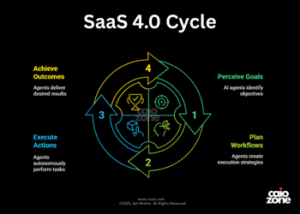
SaaS 4.0, or Service as a Software, represents the next evolution of Software as a Service. Unlike traditional SaaS models that require human input and API-based integrations, SaaS 4.0 leverages Agentic AI — autonomous AI agents capable of perceiving goals, planning workflows, and executing actions without manual intervention.
-
❓ What is Agentic AI?
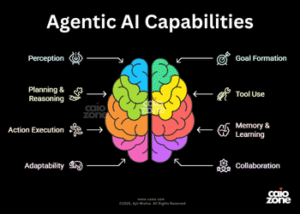
Agentic AI refers to a new class of artificial intelligence systems that don’t just generate outputs or answer queries — they perceive goals, plan actions, make decisions, and execute tasks autonomously across digital environments.
Unlike passive AI models (like chatbots or simple assistants), Agentic AI operates as an independent agent capable of many unique abilities. -
❓ What are the Capabilities of Agentic AI?

Agentic AI possesses advanced capabilities that go beyond simple task execution or content generation. Its core capabilities include:
✅Perception
✅Goal Formation
✅Planning & Reasoning
✅Tool Use
✅Action Execution
✅Memory & Learning
✅Adaptability
✅Collaboration -
❓ How does Agentic AI power SaaS 4.0?
Agentic AI provides the decision-making and execution layer for SaaS 4.0. Instead of requiring user clicks or API calls, autonomous agents interpret user goals, access data across systems, and perform complex tasks independently. This eliminates the need for traditional SDKs, APIs, or middleware.
-
❓ What are the key benefits of SaaS 4.0?
✅Automation of tasks without coding
✅Faster execution and scalability
✅Reduced operational costs
✅Elimination of complex software integrations
✅Adaptive learning through AI memory and feedback loops -
❓ How is SaaS 4.0 different from previous SaaS models?

Previous SaaS versions (1.0 to 3.0) delivered cloud-based software that still required user interaction and manual integration. SaaS 4.0 shifts the focus from software access to autonomous service execution, enabling AI agents to perform tasks previously handled by humans or dependent on complex software setups.
-
❓ Which industries can benefit from SaaS 4.0?
Virtually all industries can benefit, but early adopters include:
✅ITES and BPO (process automation)
✅Finance and Accounting (autonomous reconciliation)
✅HR and Talent Acquisition (smart resume matching)
✅Legal Services (contract analysis)
✅Customer Service (AI-powered support agents) -
❓ What is the role of the CAIO (Chief AI Officer) in SaaS 4.0 adoption?
The CAIO must:
✅Evaluate which processes can be agentified
✅Select or develop secure, reliable AI agent frameworks
✅Align agentic workflows with business objectives
✅Ensure compliance, trust, and ethical deployment of AI agents
- Banking 3.0 | Sentiment Analysis for Customer Feedback Solution
- Staffing 3.0 | Part I — Empathy Powered by Generative AI
- Telecom 6.0: How GenAI Is Rebooting the Powerful Telco Enterprise
- Pharma 5.0 | 20 Powerful Generative AI Ideas Transforming the Pharma Industry
- The Internet of Beings (IoB): 8 Powerful Use Cases of Industry 5.0 and Agentic AI

